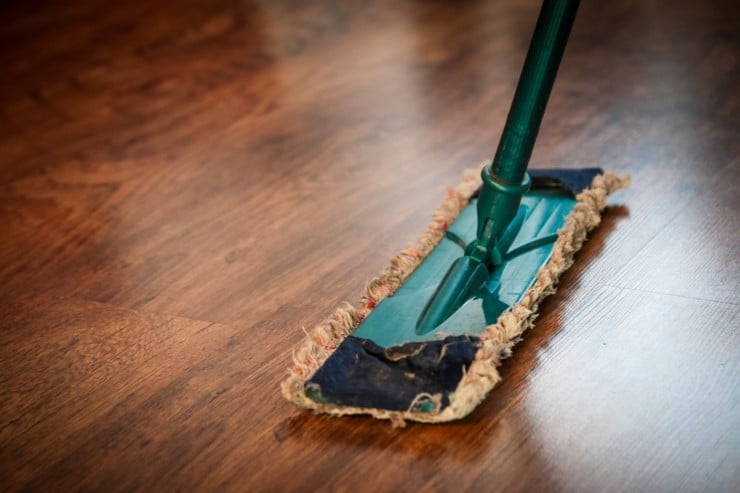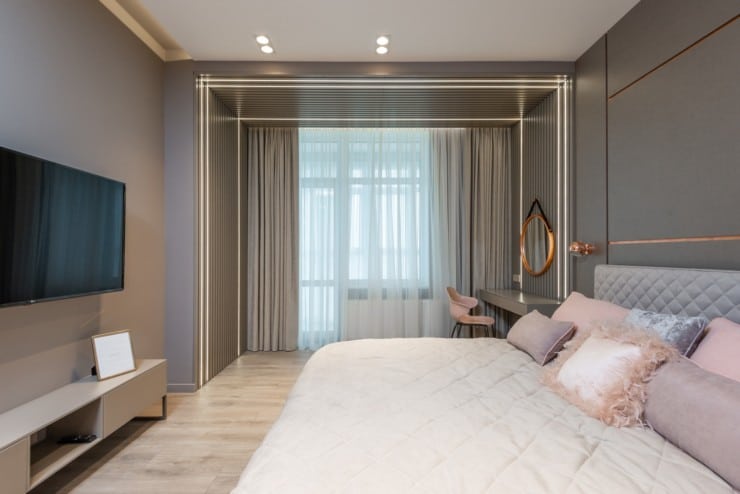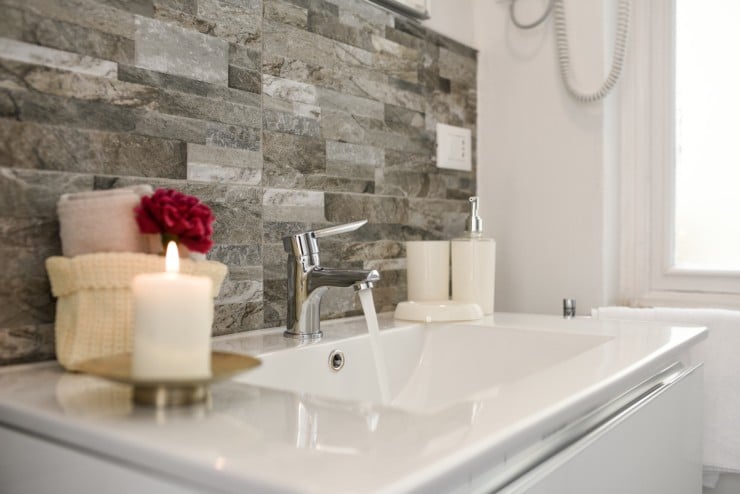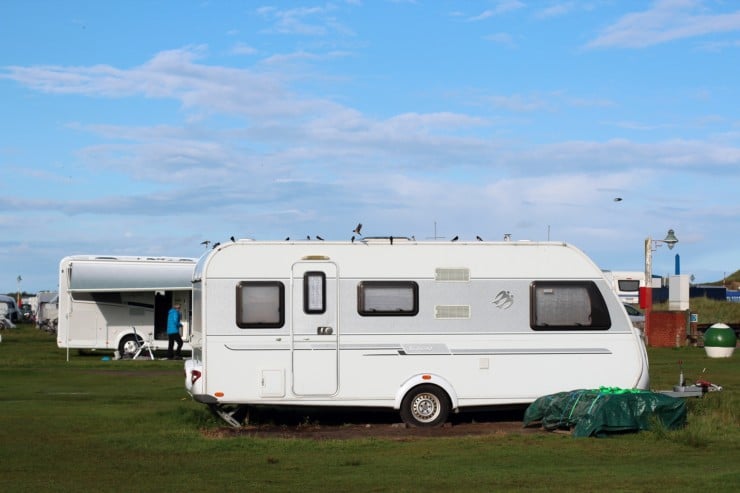What Size Mirror for a Bathroom Vanity? (Including Charts/Tables)
A bathroom would not be complete without a mirror, as it adds visual appeal.
The mirror is one of the last things you glance at before heading out, and it plays an important role in your everyday grooming tasks, such as applying makeup, styling your hair, and shaving.
A vanity mirror should, on average, be several inches smaller than your vanity sink space. Thirty inches wide vanity, for example, should be combined with a 24-28 inches wide mirror.
The height is determined by your ceiling height and your eye level. Vanity mirrors are typically 26-34 inches tall.
Factors to Consider When Choosing the Size of Your Bathroom Single Vanity Mirror
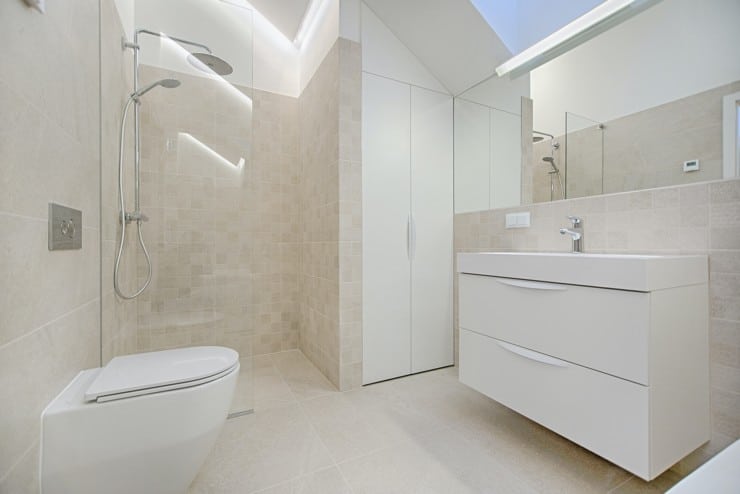
Bathroom vanity mirrors differ since each bathroom is unique.
However, how do you choose the correct size? Let’s look at the numerous factors to consider while selecting a vanity mirror.
The Width of Your Vanity
The width of your vanity is an excellent place to start. Vanity mirrors are often not broader than the bathroom vanity countertop.
If you can’t locate one precisely the same width as your vanity, go for a width that is 70-80 percent of the width of your vanity.
If it were any smaller, the proportions would be off.
The Space Between the Countertop and the Existing Vanity Lights
Keep your current vanity lights in mind when upgrading a bathroom vanity mirror.
If you have wall-mounted lights and don’t want to change any electrical lines, you’ll need to keep the height of your mirror the same as it is now.
Of course, if it fits appropriately with the space, you may always go lower in height than your present mirror.
The Height of Your Ceilings
The larger your mirror, the more valuable it is in the bathroom. We like having a good mirror for getting dressed in the morning and looking over our everyday attire.
Your mirror should be at least 5 to 8 feet above your floor.
However, if you don’t have a wall-mounted ceiling mirror or lighting that would interfere with a higher mirror, utilize tall mirrors to add height to the room.
Tall mirrors may also make a vanity seem balanced in a high-ceilinged room.
Your Bathroom’s Overall Size
If you have a tiny bathroom, try reflecting a complete wall rather than utilizing a framed vanity mirror. This increases the quantity of mirror space available in the room.
Double mirrors that fit with a more oversized double-sink vanity are an option for larger bathrooms.
What Kind of Vanity Lighting Do You Want?
As discussed in our discussion on height, you may need to factor lighting into your size estimates. A mounted vanity lamp hanging over the vanity will influence the size of the mirror you choose.
What about wall sconce lighting on the vanity’s sides? In this situation, pick a mirror around 50% of the countertop size to allow adequate space for scones to be mounted.
Below are some standard vanity lengths and mirror sizes that would help you when you want to mount a bathroom mirror.
| Bathroom vanity width | Mirror width |
| 24 inches | 22 inches |
| 30 inches | 24–28 inches |
| 36 inches | 32 inches |
| 40 inches | 36 inches |
| 60 inches | 56 inches |
| 72 inches | 66–68 inches |
What Happens if You Want Double Mirrors?
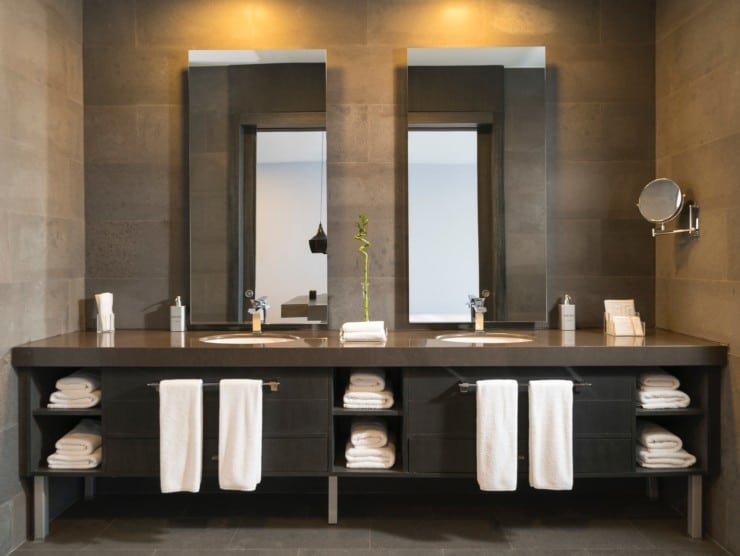
A frequent layout is to have two mirrors. Double mirrors are typically fitted on double sink vanities.
If you have two mirrors for a single sink vanity with the sink in the middle, it may seem uncomfortable and impractical.
Double mirrors can benefit from the same tactics as single mirrors.
You’re ok so long as the height of your vanity is high enough to keep your head visible and the breadth of your mirror does not surpass the width of your cabinet.
How Much Space Do You Need Between Two Vanity Mirrors?
When deciding how you want to hang your double vanity mirrors, consider the width of your countertop and your sinks.
Take 70% of the width of your countertop and split it in half to get a rough idea of the mirror width you should strive for.
There may be exemptions if you have a particularly massive vanity with excess counter space —in that case, opt for something that is a few inches broader than your sinks.
Then, align the center of your vanity sinks with the center of your mirrors.
By doing so, the mirrors are perfectly centered above the sinks, and the distance between them is ideal.
Factors to Consider When Choosing Double Vanity Mirrors
Mirror Shape
Apart from the size, you need also to examine the form of the double vanity mirrors. Don’t assume that all bathroom mirrors are square or rectangular.
Double vanity mirrors come in various forms, including oval and hexagonal. As a result, locating the correct spot for such mirrors will not always be determined by the size of the vanity.
When it comes to oval or round mirror combinations, the diameter may determine the size and ultimate spacing.
A general rule of thumb is to keep the distance between the sinks equal to the distance between the mirrors.
However, what if you have one sink? Place the first mirror two inches from the vanity’s left edge. Then, two inches from the right side, position the other mirror.
Types and Placement of Light Fixtures
The type and position of the light fixtures are also crucial factors in deciding the size and positioning of the double vanity mirrors.
For example, if you have lighting in the bathroom, make sure it is centered in between the two mirrors.
This strategy will create a visually pleasing appearance on the mirrors and throughout the bathroom, as everything will appear tidy and balanced.
If you have scones in your bathroom, you’ll need to use a different strategy. A sconce is a wall-mounted lighting device that is usually pointed downwards.
The scones should be set at equal distances on both ends of the vanity mirrors. For example, suppose you had a scone on the far left of the mirror, two inches from the longest edge.
On the opposite side of the mirror, you’ll need to add another sconce. Carry on with the second double vanity mirror in the same manner.
Choosing a Large Mirror
Instead of two vanity mirrors, you can consider putting simply one huge mirror.
You won’t have to worry about the space between twin vanity mirrors or even the proper vanity mirrors for your bathroom if you choose one huge mirror.
If you go this route, make sure the mirror you pick is at least four inches shorter than the total size of your vanity area.
For example, if your bathroom’s rectangular vanity is 62 inches long, you should acquire a mirror that is 54 inches long.
It’s also a good idea to install the mirror such that there’s a two-inch space on both sides. You’ll be able to produce a more balanced and coherent look in your bathroom.
Where to Hang Your Bathroom Mirror

The following are positions where you can hang your mirror.
Hang Above Your Vanity
When hanging a bathroom mirror, the most crucial element to consider is your height or the height of the individuals accessing the mirror.
In the mirror, you should be able to view your entire face and neck, as well as a foot above your head.
Your vanity mirror should not be hung so low that it comes into contact with the surface of your vanity.
Hang Above the Faucet Line
When choosing the size of the vanity mirror, keep in mind that it must not be below the highest point of the faucet line in the bathroom.
This usually eliminates the need to think about how much the mirror hangs above the vanity top or backsplash. Make sure it is above the faucet line.
Three key factors inspire this advice.
- Typically, a mirror that hangs below the faucets is too low on the wall to be effective. This depends on the vanity’s height, size, and faucet height.
- You will break the wall design flow if the mirror is below the faucet line.
- If the mirror is directly behind the faucet, it will almost always be splashed, thus making it more difficult to ensure its clean
When Is the Faucet Line Recommendation Less Important
When the faucet is situated beside the sink rather than behind it, the faucet line recommendation is less significant.
Another circumstance in which the faucet line recommendation is less significant is when your vanity is too tall for you, and placing the mirror just above the faucet line may place it too high over your eye line.
The following are the positions you shouldn’t hang your mirror.
Hanging Against Vanity
Your bathroom mirror should not be hung so low that it makes contact with the surface of your vanity.
If the mirror was at level with the vanity, water may flow behind it and cause damage to both the mirror and the wall behind it.
A backsplash is commonly used on bathroom vanities to protect the wall from water damage.
Hanging Against the Backsplash
If the mirror was flat against the backsplash, the lip of the vanity backsplash might still gather water and channel it under and behind the mirror.
If your vanity countertop has a backsplash, ensure the mirror hangs at least 1 inch over the backsplash.
What is the Ideal Height for a Vanity Mirror?

Three things limit the height of your bathroom vanity mirror:
- The ceiling’s height
- Fixtures that are wall-mounted
- The length of the mirror
The Ceiling’s Height
A vanity mirror must not reach the top of the ceiling. If you want to hang a lengthy mirror over your vanity, make sure there is at least a 4-inch space between the tip of the mirror and the ceiling.
In reality, a large mirror in a tiny bathroom or one with a low ceiling might help to expand the area.
A mirror that stretches up, on the other hand, might seem odd in a bathroom with a very high ceiling.
Fixtures That are Wall-Mounted
If there is a wall-mounted light fixture or tall floating shelves between your vanity and the above, the mirror cannot stretch to the ceiling.
The mirror should only be a few inches away from the wall-mounted fixtures, and it should never contact them.
The Length of the Mirror
An extremely thin, long mirror will usually only be helpful in very specialized circumstances. Keeping the mirror proportionate is the safer approach.
You may obtain rectangular mirrors, circular mirrors, or any other shape you like. The dimensions should be visually attractive to you.
Frequently Asked Questions
How High Should Your Mirror be Above the Bathroom Vanity?
The height of your vanity will also decide the size of your mirror. You should ideally set the mirror.
Setting the mirror a few feet higher than the tallest point of your countertop faucet, or six to twelve feet over the bathroom sink, is excellent.
It would be best if you also considered your bathroom lighting fittings.
Should Bathroom Lights Hang Over the Mirror?
If one light is set higher than the other, the room may appear unbalanced. Sconces on each side of the bathroom mirror are most effective when used in pairs.
If you enjoy the aesthetic of a sconce and want one, consider putting it above the mirror.
Installing a sconce above your mirror not only creates an elegant look but is also perfect for those who want to be able to use it as they dress.
Installing sidelights at a lower height in a children’s restroom should be avoided.
Final Thoughts
When deciding on the size of your bathroom vanity mirror, make sure you can see yourself well in it.
The mirror should display your head and neck. Second, the mirror should be thinner than the vanity’s widest point.
Third, the vanity mirror should be broader than the bathroom sink. However, if you have a round or oval mirror, you may reduce it to the same width as the sink, but never less.
Finally, the mirror should not come into contact with anything, including the backsplash, surrounding walls, vanity wall, ceiling, and so on.


